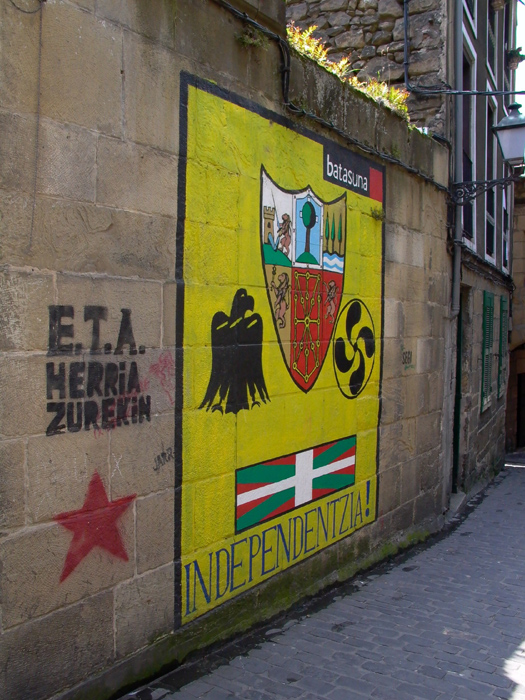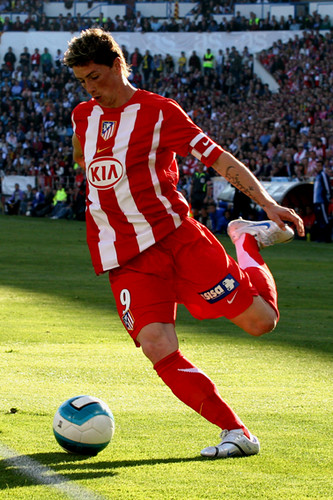
While the traditions of the press in Spain back dates to the eighteenth century, its roots are to be found as far back as the seventeenth century. During the nineteenth century, newspapers became closely affiliated with specific political groups and also linked to business interests. Three important political events shaped the press of twentieth century Spain: the rise of the Second Republic; the Spanish Civil War and subsequent triumph of General Francisco Franco (Fascist Dictator of Spain); and the death death of Franco which

brought a transition to democracy. Full freedom of the press was an ongoing battle in Spain since the 1800's and the death of a dictator brought the European democracy complete freedom to comment on all political, cultural, and social issues. Furthermore, a major development was broadcasting in regional languages and the arrival of commercial national stations.
The press in Spain is almost finally coming out of a period of transition with characteristics that are lower in comparison to presses in modern European countries. Even so, with almost 44.1 million inhabitants, the "free press is reaching great audiences and is gaining remarkable commercial strength" according to media analysts. Media mediums include:
- Television - which includes the transition from the analogue television to the digital system so called “analogical blackout”– will have to conclude by April 2010.
- Telefónica, the most powerful and spread telecommunications company been promoting the ADSL technology not only by offering Internet connection, but also interactive television services. It also started to offer a new service of television by ADSL in 2005, called Imagenio. Since the beginning of 2006 other ADSL operators have also begun to offer similar services, such as Jazztelia TV by the Jazztel Telecommunications Company
- Radio has been a profound impact on Spanish media. SER is the most popular radio network which is known for its music and news programs. "HORA 25" radio program played an important role in Spain's transition to democracy by broadcasting some of the first uncensored new stories in Spain's history.
- Internet continues its slow growth in Spain and, in fact, it was the only mass medium whose consumption grew in 2005.
PRINT MEDIA IN SPAIN Newspapers have evolved from traditional print media to electronic versions on the internet. The most read newspapersars are 20 minutes with approximately 2,048,000 viewers and El Pais with 2,498,000 viewers. There are 8 other top newspapers not too far behind. Four are regional: La Vanguardia, El Periódico ; El Correo Español ; and La Voz de Galicia; Regional newspapers are papers published in the different regional languages Catalan, Basque and Galician. Regional press stretches as far as the Canary Islands with characteristics that include international and "parochial" local news reporting with a history as far back as 1808. Three distinct papers are dedicated to a Sports Fanatic Spain Marca, As, and Sport. El País, ABC and El Mundo, are national newspapers.
Newspapers have evolved from traditional print media to electronic versions on the internet. The most read newspapersars are 20 minutes with approximately 2,048,000 viewers and El Pais with 2,498,000 viewers. There are 8 other top newspapers not too far behind. Four are regional: La Vanguardia, El Periódico ; El Correo Español ; and La Voz de Galicia; Regional newspapers are papers published in the different regional languages Catalan, Basque and Galician. Regional press stretches as far as the Canary Islands with characteristics that include international and "parochial" local news reporting with a history as far back as 1808. Three distinct papers are dedicated to a Sports Fanatic Spain Marca, As, and Sport. El País, ABC and El Mundo, are national newspapers.

El País set the tone for serious journalism in Spain. It expresses liberal democratic views along with pluralist views towards the recently formed independant communities. It is published in Madrid in a tabloid format of between 80 to 100 pages. It reports aspects of all Spanish life and culture as well as international news.
Kiosk Literature
Newspapers as well as other periodical press form part of what has been called "kiosk literature. It refers to both serous and popular content. It is of mass appeal which includes newspapers, sports press, economic, and travel commonly referred to as "prensa del corazon" (press of the heart).
Framework in SpainRapid change characterize modern media in Spain. The most significant problems like in the U.S are those of energy, inflation, growing unemployment and immigration. A study of media framing has been depicted in Spain in regards to immigration in the local newspapers. In a case study done in the region of Castilla y Leon, 586 news articles were examined to detect news framing in the immigration news coverage. Two frame packages - the Issue frame and the Visual frame were actually created to interpret these frames discovered in the news.
There now exists a National Federation of Associations of the Press aswell as regional and local associations whose objectives are to protect the rights and interstes of all journalists and promote and enforce high standards and ethics of the profession. The broadcast media have specific laws for their contents and schedules of emission, inspired by the European regulations. The content providing through Internet is regulated by one specific law since 2002. No specific laws apply to printed media.
Media - The Voice of the PeopleThe other face of the spanish “royal democracy”. Nowadays, our own police is used against disarmed civilians

"The red-yellow-purple is Spanish republican flag. This flag represents the defense of a democratic State, without monarchy, where all the members of the government are chosen by the town. Nowadays, in Spain, a king designated by the Franco dictator is still the Commander-in-Chief of the Army. The man on the floor, is an unarmed civilian,
The man in black is a member of the armed forces of Defense of State who's function should be to serve and protect Citizenship, guarding it's physicial and political integrity."
The foundation of Spain Journalism and Media stands politically aggressive with their views and social status. They embrace the power of media and take pride in being bold whenever the ocassion rises to put out there what's happening on the local streets. But as the media plague spreads it continues to try infecting the principles and traditional values of its community. It's a plague geared from the power of the almighty dollar, the so called "popular culture" seems to be manipulating on a worldwide level.
Jose Couso " Shooting The Messenger ""One of the most powerful executives in the cable news business, CNN’s Eason Jordan, was brought down after he spoke out of school during a panel discussion at the World Economic Forum in January. In a rare moment of candor, Jordan reportedly said that the US military had targeted a dozen journalists who had been killed in Iraq. The comments quickly ignited a firestorm on the Internet, fueled by right-wing bloggers, that led to Jordan’s recanting, apologizing and ultimately resigning after twenty-three years at the network, "in an effort to prevent CNN from being unfairly tarnished by the controversy."
" Shooting The Messenger ""One of the most powerful executives in the cable news business, CNN’s Eason Jordan, was brought down after he spoke out of school during a panel discussion at the World Economic Forum in January. In a rare moment of candor, Jordan reportedly said that the US military had targeted a dozen journalists who had been killed in Iraq. The comments quickly ignited a firestorm on the Internet, fueled by right-wing bloggers, that led to Jordan’s recanting, apologizing and ultimately resigning after twenty-three years at the network, "in an effort to prevent CNN from being unfairly tarnished by the controversy."
But the real controversy here should not be over Jordan’s comments. The controversy ought to be over the unconscionable silence in the United States about the military’s repeated killing of journalists in Iraq."
Spanish papers and press are saying NO! To the War In Iraq! One camera man Jose Couso was reporting from a Palestinian Hotel when he was shot and killed unarmed by U.S Military.
His family has filed a lawsuit against the US soldiers who killed him, and they plan to travel to the United States for the anniversary of his death this spring. Will any network have the courage to put them on the air?

The people go to the streets and express their sorrow and outrage!

Til present day, spanish media insists on voicing their cry for peace and an end to the War in Iraq. Not only in name of Jose Couso, but in the name of hundreds of journalists innocently killed.
____________________________________________________________________
References:http://www.elpais.com/global/http://www.ejc.net/media_landscape/article/spain/http://www.josecouso.info/http://www.culturalpolicies.net/web/spain.php?aid=538www.encyclopedia.comhttp://www.editorsweblog.org/newspaper/2009/03/spanish_press_asks_for_government_interv.php______________________________________________________________________
This blog is not dedicated to provide a one sided demonstration of Spanish Media and culture. But to provide information of the different aspects and issues that have existed and exist today. Comments welcome.

 mations. According to Jose Magone’s book on assessing contemporary Spanish politics there have been five particular phases of political ideologies that play a factor in information distribution adjunct to its suppression. Stemming from the totalitarian days of Francisco Franco, to nationalist democratization of the early 80’s, and socialist reformation of the modern Spanish political landscape, propaganda techniques continue to prove important instruments in agenda setting expressionism.
mations. According to Jose Magone’s book on assessing contemporary Spanish politics there have been five particular phases of political ideologies that play a factor in information distribution adjunct to its suppression. Stemming from the totalitarian days of Francisco Franco, to nationalist democratization of the early 80’s, and socialist reformation of the modern Spanish political landscape, propaganda techniques continue to prove important instruments in agenda setting expressionism. nd accordingly the horrors subjected to the Jewish community during the Holocaust. Modern day scholars question the sincerity of Franco’s position pertaining to the well being of the Jewish community as opposed to “improve(ing) the dictatorship’s image in the eyes of Western democratic public opinion,” but nevertheless, over time it proved effective in defending the welfare of the Jewish community and ameliorating the anti-Semitic sentiments of the time.
nd accordingly the horrors subjected to the Jewish community during the Holocaust. Modern day scholars question the sincerity of Franco’s position pertaining to the well being of the Jewish community as opposed to “improve(ing) the dictatorship’s image in the eyes of Western democratic public opinion,” but nevertheless, over time it proved effective in defending the welfare of the Jewish community and ameliorating the anti-Semitic sentiments of the time. Islamic jihadists that currently roam its socio- political landscape. For example, these extremist groups attempt unorthodox approaches towards propaganda, mostly violent or inflammatory such as vandalism, graffiti, and even martyrdom. These approaches towards propaganda, although by no means traditional, still prove effective in, if not instilling fear amongst its rivals and intended audience, then getting a biased, fear-mongering message across. As for the current Socialist regime in Spain like any governing body also contain their own strategies of policy setting, fortunately just as effective and not as damaging to its own public.
Islamic jihadists that currently roam its socio- political landscape. For example, these extremist groups attempt unorthodox approaches towards propaganda, mostly violent or inflammatory such as vandalism, graffiti, and even martyrdom. These approaches towards propaganda, although by no means traditional, still prove effective in, if not instilling fear amongst its rivals and intended audience, then getting a biased, fear-mongering message across. As for the current Socialist regime in Spain like any governing body also contain their own strategies of policy setting, fortunately just as effective and not as damaging to its own public. 


 Since these shows were purchased because the government issued this effect, they next time programs come in they will be examined before purchase. Spain continues to have a problem with
Since these shows were purchased because the government issued this effect, they next time programs come in they will be examined before purchase. Spain continues to have a problem with 


















